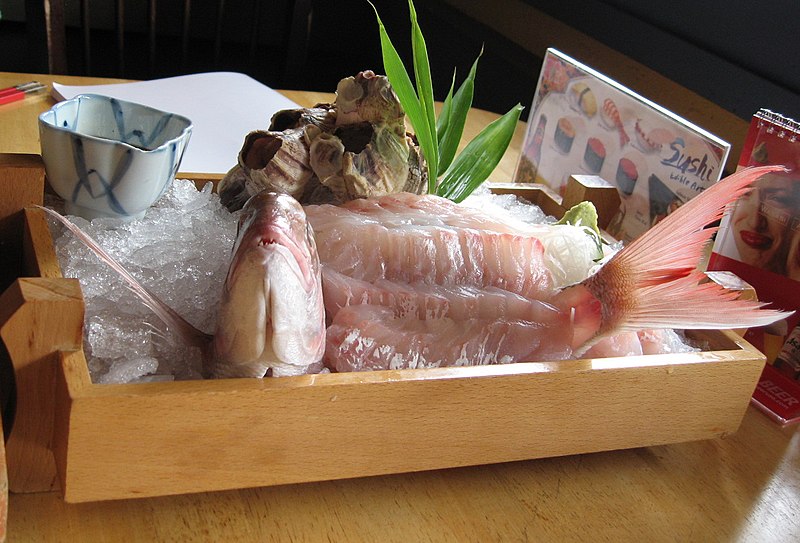BERLIN - The octopus is moving around on the plate on its tentacles. The cook swiftly grabs it by its slimy head, pushes a skewer through the tentacles, wraps them around it – and voila, the Korean delicacy known as sannakji, served with chili sauce or a sesame oil and salt dip.
Sannakji means “live octopus,” explains Hwan Nam-kong of Furusato, a Korean restaurant in Berlin, adding that the dish can be found all over Korea.
That the octopus is still moving when served is not a problem. On the contrary: "The fact that it is still alive on the plate is a sign of quality," she says. If the octopus is very large, the tentacles are cut off with scissors right before serving.
But the tentacles are also "alive." They continue to move, and will even wander off if they're not stopped. Andreas Nieder, a professor at the University of Tubingen’s Institute of Neurobiology, explains the mechanism this way: "When parts of an animal are separated from it and continue to move it means that smaller nerve bundles are still intact.” The bundles can carry on in absence of the brain for a while.
However, eating moving tentacles is not without danger: they can fix themselves to the inside of your mouth – or worse your throat – which could lead to suffocation and death. So if you order the dish in Korea make sure to chew well, advises Hwan Nam-kong. In her Berlin establishment, octopus is not served this way for the simple reason that it’s difficult to get live octopus in Germany.
She has heard that Germans believe that eating living things is a form of animal torture. "Every country has its own food culture that should be accepted by other cultures," she says.
German animal protection laws allow such “delicacies” requiring only that all vertebrates be killed without causing them pain. That’s because "we assume that vertebrates can feel certain types of pain, which means they can suffer," explains Professor Nieder. Because octopuses aren’t vertebrates they don’t qualify for this consideration.
Rotten cheese attracts the *meat* course
According to German law, ikizukuri, a Japanese method of preparing fish – a vertebrate – would be illegal in Germany.
Koki Umesaka, a chef at Berlin’s Daruma Japanese restaurant, explains that with ikizukuri, a fish is served with its eyes, gills and mouth still moving. That’s not easy, he says. It requires a special technique, and a very sharp knife. Only very experienced chefs know how to do this, he says.

Ikizukuri - Photo: GNU Free Documentation License
And the point of serving fish alive? Here too it’s a sign of freshness and quality. He tried it on his customers in Berlin, but they didn’t like it.
Less problematic in terms of animal rights, but not necessarily more appetizing to German palates, is the Sardinian cheese specialty known as casu marzu, which is also a living food. Translated, its name means "rotten cheese" referring to the maggots writhing within.
Making casu marzu is simple: take a pecorino (sheep’s milk cheese), remove the rind and then leave it outside, explains Andrea L'Abbate of the eponymous Italian cheese manufacturer in Frankfurt. The cheese fly piophila casei will shortly lay some 500 eggs in it.
Casu marzu cheese - Photo: Shardan
The maggots that emerge from the eggs feast on the cheese, and their microbial metabolic products give it a creamy consistency and powerful smell – and when that happens, the Sardinian delicacy has reached the ready-to-eat stage for humans. Serve with bread and red wine – but make sure to wear glasses to protect your eye, because the maggots leap about.
That’s if you can find the cheese at all – tightened hygiene regulations in Germany now forbid production of casu marzu, says L'Abbate, although there’s a black market for it where it costs double what a normal pecorino would cost. She also warns that diarrhea or vomiting may result from consumption, although another supposed side effect is heightened sexual desire.
A similar side effect is attributed to another living food you can easily find in Germany – oysters. Greek mythology has it that Aphrodite, goddess of love, sprang from an oyster. Famed Italian seducer Casanova is said to have eaten oysters to maximize his staying power, according to Guillaume Boullay of the Austern Restaurant Meerwein in Hamburg.
If you eat raw oysters they have to be alive, otherwise you may get food poisoning, he says. The way to recognize a living oyster is by its shell clamped tightly shut, and the smell of fresh iodine when you pry it open with an oyster knife. You can also tell by the way the oyster inside moves if you touch it with the tip of the knife or squirt lemon juice on it.
There is one common kind of live food that is not a curiosity: live lactic acid bacteria are found in most German refrigerators in products like sour cream and yoghurt. And although this is also a living food, hardly anyone in Germany finds it unappetizing. On the contrary: statistically, every German consumes about 18 kilograms of yogurt per year.
Conclusion? Every cuisine in the world seems to offer live food of some kind – but what’s unappetizing, downright disgusting, or crosses over into animal torture is judged very differently depending on which country you are in.
